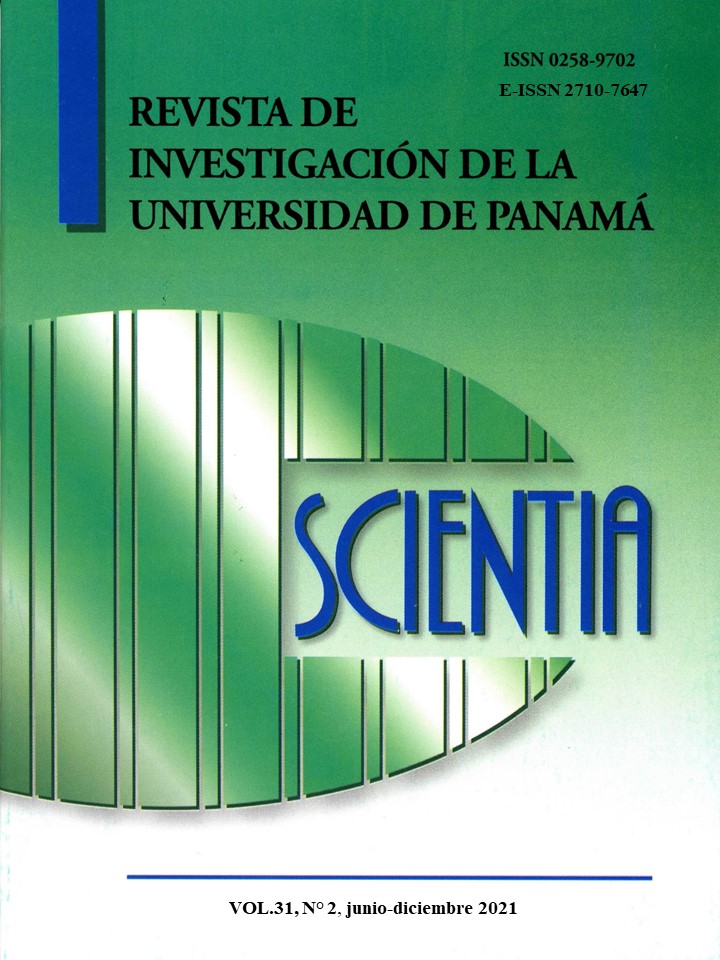References
Batista, G. V. (2009) Cultivo Ecosostenible de Kappaphycus alvarezii en Panamá.
Tesis de Doctorado, Universidad de Las Palmas de Gran Canaria.
Dumilag, R., Orozco, F. y Lluisma, A. (2016). Genetic diversity of Kappaphycus species (Gigartinales, Rhodophyta) in the Philippines, Systematics and Biodiversity, 14 (5): 441-451. https://doi.org/10.1080/14772000.2016.1157643
Fredericq, S., Hommersand, M.H. y Freshwater, D.W. (1996). The molecular systematics of some agar –and carrageenan- containing marine red algae based on rbcL sequence analysis. Proceedings XVth int Seaweed Symp. Hydrobiologia 326-327 (1): 125-135.
Freshwater, D.W. y Rueness, J. (1994). Phylogenetic relationships of some European Gelidium (Gelidiales, Rhodophyta) species, based on rbcL nucleotide sequence analysis. Phycologia 33(3): 187-194
Hall, T.A. (1999). BioEdit: a user-friendly biological sequence alignment editor and analysis program for Windows 95/98/NT. In Nucleic acids symposium series (Vol. 41, No. 41, pp. 95-98). [London]: Information Retrieval Ltd., c1979- c2000.
Ji, T., Phaik, L., y Siew-Moi, P. (2013). Phylogenetic relationship of Kappaphycus Doty and Eucheuma J. Agardh (Solieriaceae, Rhodophyta) in Malaysia. Journal of Applied Phycology, 25: 13–29. https://link.springer.com/article/10.1007%2Fs10811-012-9833-1.
Murray, M. G. y Thompson, W. F. (1980). Rapid isolation of high molecular weight plant DNA. Nucleic Acids Research, 8: 4321–4326. https://academic.oup.com/nar/article/8/19/4321/2381063
Perez-Gonzalez, C.M. (2013). Caracterización biológica y química de Kappaphycus alvarezii de Panamá. Tesis de Doctorado, Universidad de Las Palmas de Gran Canaria.
Phaik, E. L., Takeaki, H., Motohiro, S.y Kazuhiro, K. (2007). Molecular Phylogeny of Crustose Brown Algae (Ralfsiales, Phaeophyceae) Inferred from rbc l Sequences Resulting in the Proposal for Neoralfsiaceae Fam. Nov. Phycologia, 46(4):456-466. https://www.tandfonline.com/action/showAxaArticles?journalCode=uphy20
Phaik, E. L., Li-En, Y., Ji, T., Maggs, C. y Brodie J (2017). Advancing the taxonomy of economically important red seaweeds (Rhodophyta), European Journal of Phycology, 52 (4): 438-451. https://doi.org/10.1080/09670262.2017.1365174 Sellers, A., Saltonstall, K. y Davidson, T. (2015). The introduced alga Kappaphycus alvarezii (Doty ex PC Silva, 1996) in abandoned cultivation sites in Bocas del
Toro, Panama. BioInvasions Records 4 (1): 1-7. https://doi.org/10.3391/bir.2015.4.1.01
Sudhir K., Glen S., Li, M., Knyaz, C. y Koichiro T. (2018). MEGA X: Molecular Evolutionary Genetics Analysis across computing platforms. Molecular Biology and Evolution 35:1547-1549
Tan, J., Lim, P.E., Phang S.M., Hong, D.D., Sunarpi, H., y Hurtado, A.Q. (2012). Assessment of four molecular markers as potencial DNA barcodes for red algae Kappaphycus Doty and Eucheuma J. Agardh (Solieriaceae,
Rhodophyta) PLoS ONE 7(12) e52905. https://doi.org/10.1371/journal.pone.0052905
Thien, V.Y., Yong, W.T.L., Anton, A., Chin, G.J.W.L. (2020). A multiplex PCR method for rapid identification of commercially important seaweeds Kappaphycus alvarezii, Kappaphycus striatus and Eucheuma denticulatum (Rhodophyta, Solieriaceae). Regional Studies in Marine Science, 40,101499. https://doi.org/10.1016/j.rsma.2020.101499.
Zuccarello G., Alan, T. C., Jennifer, S., Volker, S., Genevieve, B. L., John, A. W. (2006). Systematics and genetic variation in commercial shape Kappaphycus and shape Eucheuma (Solieriaceae, Rhodophyta). Journal of Applied Phycology, 18: 643–651. https://link.springer.com/article/10.1007%2Fs10811-006-9066-2

